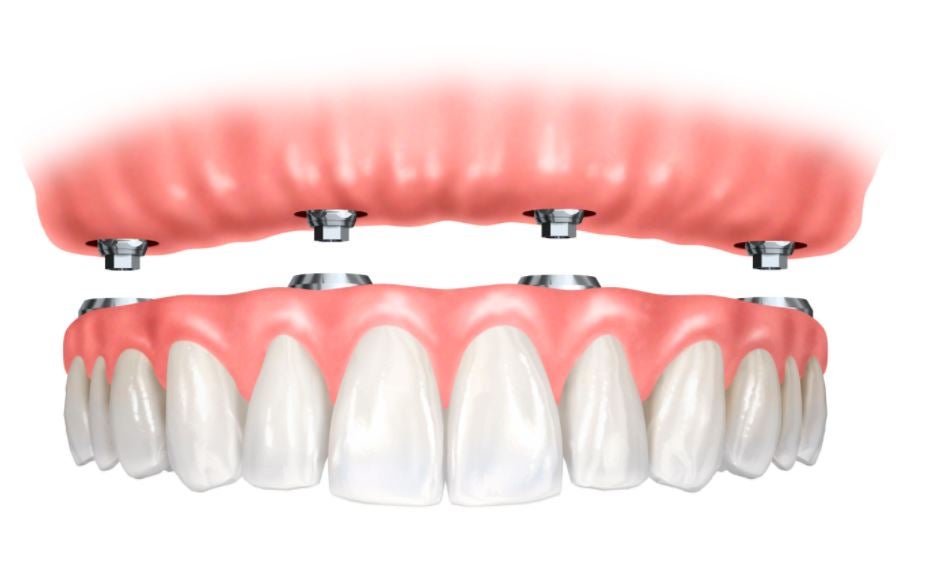An Unbiased View of Dental Sense
An Unbiased View of Dental Sense
Blog Article
Dental Sense - An Overview
Table of ContentsThe 5-Second Trick For Dental Sense8 Simple Techniques For Dental SenseThe 7-Minute Rule for Dental SenseSome Known Incorrect Statements About Dental Sense
are clinical tools surgically dental implanted right into the jaw to bring back an individual's capacity to eat or their appearance. They give assistance for synthetic (fake) teeth, such as crowns, bridges, or dentures. When a tooth is lost due to injury or condition, a person can experience issues such as quick bone loss, defective speech, or modifications to chewing patterns that cause pain.Oral dental implant systems are composed of an oral implant body and oral implant abutment and may likewise include a joint addiction screw. Dental implants. The oral implant body is operatively inserted in the jawbone in area of the tooth's root. The oral implant abutment is normally connected to the dental implant body by the joint addiction screw and expands through gums into the mouth to support the affixed man-made teeth
(https://penzu.com/p/6de5c74cda18cc8f)Framework of The Oral Implant System selecting dental implants, talk to your oral service provider regarding the potential benefits and dangers, and whether you are a candidate for the treatment. Things to think about: Your overall wellness is a vital aspect in identifying whether you are a great prospect for oral implants, the length of time it will require to recover, and just how long the dental implant might remain in location.
Smoking cigarettes may influence the healing procedure and decrease the long-term success of the dental implant. The recovery process for the dental implant body might take numerous months or longer, during which time you typically have a short-lived joint instead of the tooth. the dental implant procedure: Meticulously adhere to the dental hygiene instructions provided to you by your dental provider.
Indicators on Dental Sense You Need To Know
Implant failure can cause the demand for an additional surgery to take care of or replace the dental implant system. Recovers the capacity to chew Recovers cosmetic appearance Assists keep the jawbone from diminishing as a result of bone loss Preserves the health and wellness of the bordering bone and periodontals Aids maintain surrounding (nearby) teeth secure Enhances lifestyle Damage to surrounding all-natural teeth throughout dental implant placement Injury to the surrounding cells throughout surgical treatment, such as sinus perforation Injury during surgical procedure (for example, crack of bordering jawbone) Inadequate function, such as seeming like the teeth do not bite together normally An experience that the tooth is loosened or turning in location arising from an abutment screw loosening Implant body failing (looseness of the dental implant body) due to systemic infection, which might be more probable in clients with uncontrolled diabetics issues as a result of local infection in bone and gums sustaining the implant body as a result of delayed recovery, which might be most likely in individuals that smoke Problem cleaning the gum tissues around the implant, leading to poor oral hygiene Without treatment periodontal illness Post-surgical feeling numb because of nerve impingement or damages Always notify health and wellness care suppliers and imaging technicians that you have oral implants prior to any magnetic vibration imaging (MRI) or x-ray procedures.
FDA is not knowledgeable about any type of negative occasions reported for MRI or x-ray procedures with dental implants. Oral implants systems are normally constructed from materials that adhere to global consensus requirements of the International Company for Standardization (ISO) or ASTM International. These standards have details of what makes a risk-free material.

An oral implant is a framework that changes a missing tooth. With screw-like devices, the doctor inserts a dental implant right into the jawbone, and it functions as an anchor for a man-made tooth, called a crown. A tool called a joint links the synthetic tooth to the dental implant. The crown is custom-made to fit the individual's mouth and match the color of their teeth.
The Best Guide To Dental Sense
Some people are not qualified for oral implant surgical procedure. It is for dental doctors to run on people with: acute illnessuncontrollable metabolic diseasebone or soft cells illness or infectionIf these concerns are solved, an individual can have the surgery. In, oral cosmetic surgeons abstain from running on people with: If individuals with any one of the above go through dental implant surgical procedure, there is a higher risk of the dental implant falling short.

Oral dental implant surgery is a customized process. Provide you time to heal. Attach the post great post to read and final crown, bridge or denture.
Next, your specialist will carefully place the dental implant right into your jaw. If your dental implant is near the front of your mouth, your dental professional will certainly make a short-lived tooth for you to wear until you recover.
The Definitive Guide to Dental Sense
Your service provider can inform you what to expect in your scenario. Throughout the healing phase, your jawbone should fuse to the dental implant. This procedure, called osseointegration, is important for security and long-lasting success. This process can take anywhere from three to nine months. Sometimes, it may take much longer.
When your dental implant heals, your dental professional can affix the abutment (small connector blog post) and your final restoration (crown, bridge or denture). This usually takes regarding one hour to finish and might call for a second small surgical procedure. You shouldn't really feel any pain during your dental implant treatment because your supplier will certainly use medicine to numb your gum tissues.
Report this page